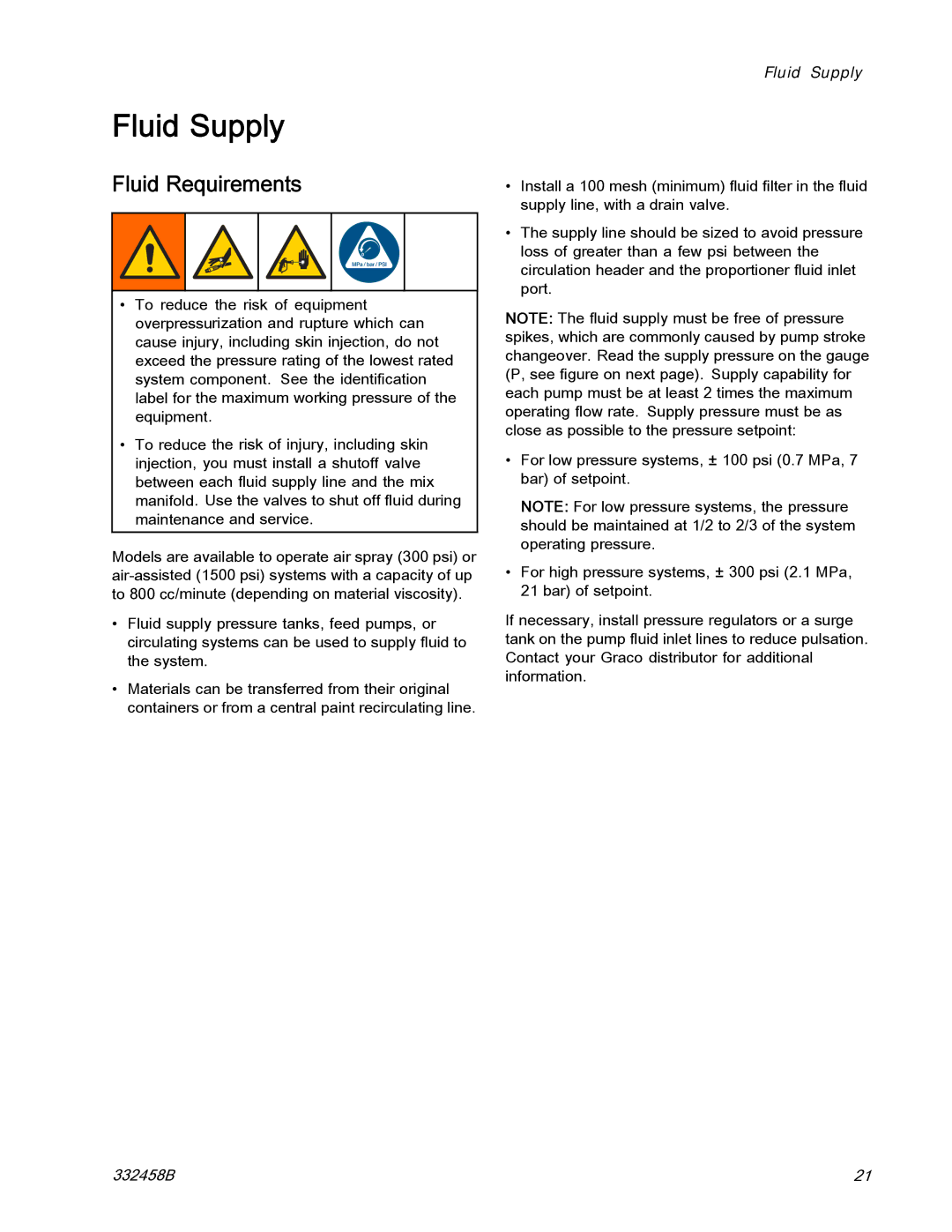
Fluid Supply
Fluid Supply
Fluid Requirements
•To reduce the risk of equipment overpressurization and rupture which can cause injury, including skin injection, do not exceed the pressure rating of the lowest rated system component. See the identification label for the maximum working pressure of the equipment.
•To reduce the risk of injury, including skin injection, you must install a shutoff valve between each fluid supply line and the mix manifold. Use the valves to shut off fluid during maintenance and service.
Models are available to operate air spray (300 psi) or
•Fluid supply pressure tanks, feed pumps, or circulating systems can be used to supply fluid to the system.
•Materials can be transferred from their original containers or from a central paint recirculating line.
•Install a 100 mesh (minimum) fluid filter in the fluid supply line, with a drain valve.
•The supply line should be sized to avoid pressure loss of greater than a few psi between the circulation header and the proportioner fluid inlet port.
NOTE: The fluid supply must be free of pressure spikes, which are commonly caused by pump stroke changeover. Read the supply pressure on the gauge (P, see figure on next page). Supply capability for each pump must be at least 2 times the maximum operating flow rate. Supply pressure must be as close as possible to the pressure setpoint:
•For low pressure systems, ± 100 psi (0.7 MPa, 7 bar) of setpoint.
NOTE: For low pressure systems, the pressure should be maintained at 1/2 to 2/3 of the system operating pressure.
•For high pressure systems, ± 300 psi (2.1 MPa, 21 bar) of setpoint.
If necessary, install pressure regulators or a surge tank on the pump fluid inlet lines to reduce pulsation. Contact your Graco distributor for additional information.
332458B | 21 |
